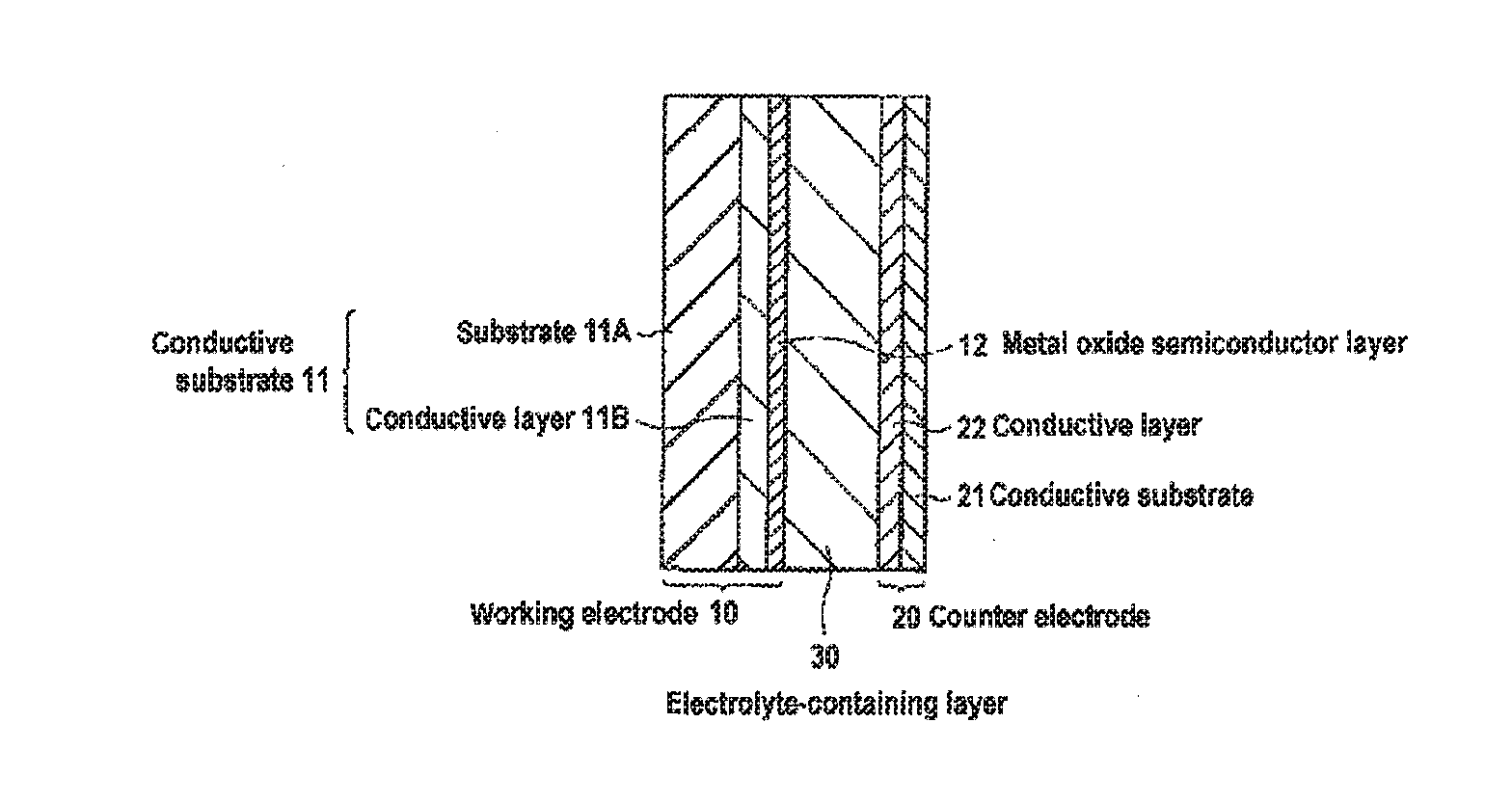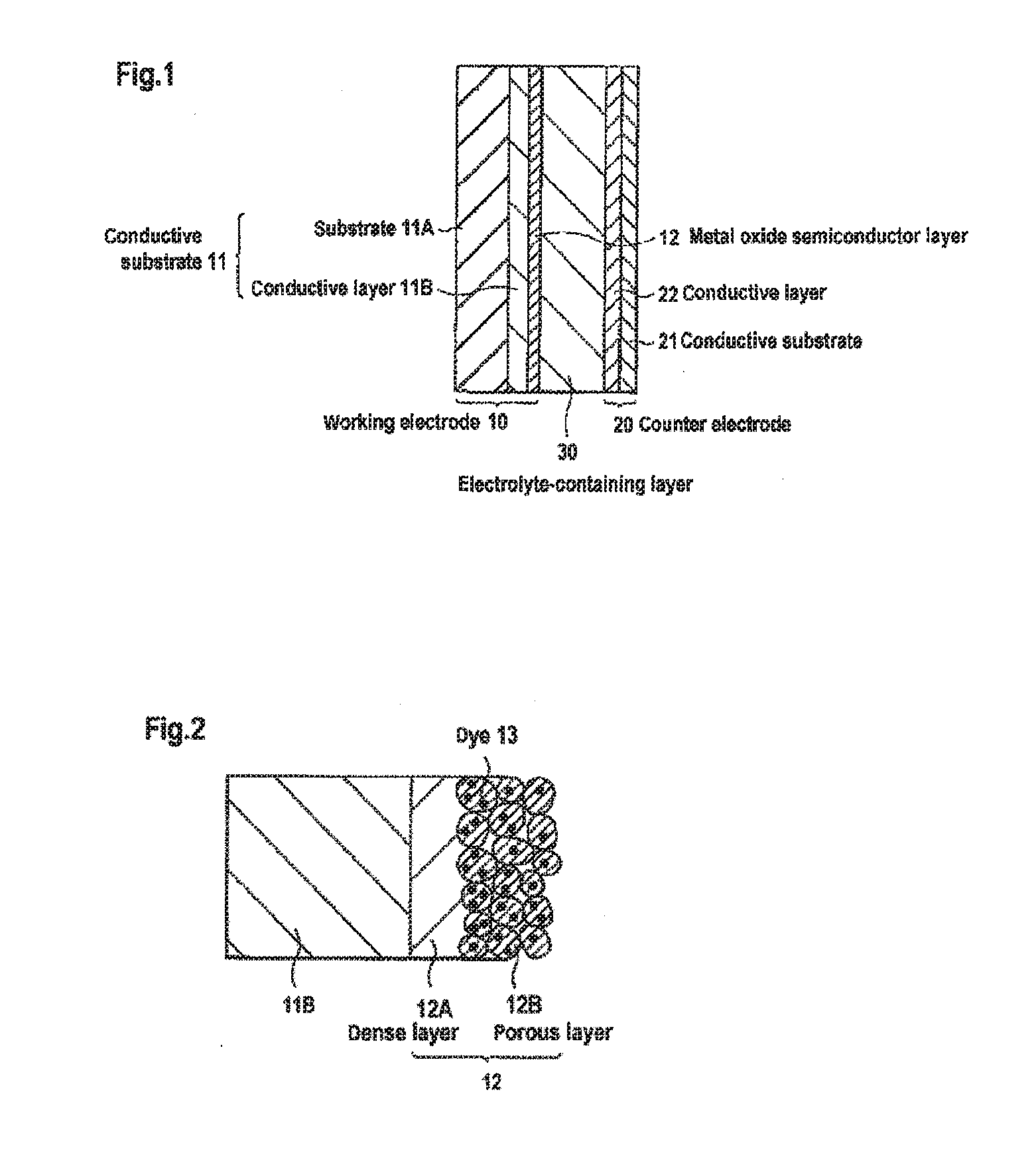Carrier system and photoelectric conversion device
a carrier system and photoelectric conversion technology, applied in the field of carrier system and photoelectric conversion device, can solve the problems of low light utilization efficiency and low photoelectric conversion efficiency of the device, and achieve the effect of excellent photoelectric conversion efficiency and suitable for solar cells
- Summary
- Abstract
- Description
- Claims
- Application Information
AI Technical Summary
Benefits of technology
Problems solved by technology
Method used
Image
Examples
synthesis example 1
Synthesis of Compound No. 1
[0116]1-Methylimidazole (Tokyo Chemical Industry Co., Ltd.) (5.07 mmol), 11-iodoundecanoic acid (6.09 mmol), and tetrahydrofuran (6 g) were placed in a reaction flask and were reacted by heating under reflux for 3 hours. Then, hexane was added to the reaction flask, and the precipitated crystals were filtered to obtain 1.33 g of a white solid (yield: 67%). It was verified by 1H-NMR and IR that the obtained solid was Compound No. 1. Data are shown in Tables 1 to 3.
synthesis examples 2 to 8
Synthesis of Compounds Nos. 2 to 4 and 19 to 22
[0117]Compounds Nos. 2 to 4 each were synthesized according to the same manner as in Synthesis Example 1, except that an imidazole compound and a haloalkyl carboxylic acid corresponding to the respective target compound were used. Compounds Nos. 19 to 22 were synthesized by subjecting Compound No. 1 to a salt exchange reaction with KPF6, potassium trifluoromethanesulfonate, sodium tetrafluoroborate, and potassium bis(trifluoromethanesulfonyl)imide, respectively. Data are shown in Tables 1 to 3. It should be noted that the yield in each of the Synthesis Examples 5 to 8 is the yield for the salt exchange reaction. Table 4 shows data of 19F-NMR.
TABLE 1YieldSynthesizedAppearance(%)compoundSynthesisWhite solid67No. 1Example 1SynthesisWhite solid48No. 2Example 2SynthesisWhite solid65No. 3Example 3SynthesisWhite solid11No. 4Example 4SynthesisWhite solid98No. 19Example 5SynthesisWhite solid95No. 20Example 6SynthesisWhite solid98No. 21Example 7S...
PUM
 Login to View More
Login to View More Abstract
Description
Claims
Application Information
 Login to View More
Login to View More - R&D
- Intellectual Property
- Life Sciences
- Materials
- Tech Scout
- Unparalleled Data Quality
- Higher Quality Content
- 60% Fewer Hallucinations
Browse by: Latest US Patents, China's latest patents, Technical Efficacy Thesaurus, Application Domain, Technology Topic, Popular Technical Reports.
© 2025 PatSnap. All rights reserved.Legal|Privacy policy|Modern Slavery Act Transparency Statement|Sitemap|About US| Contact US: help@patsnap.com



